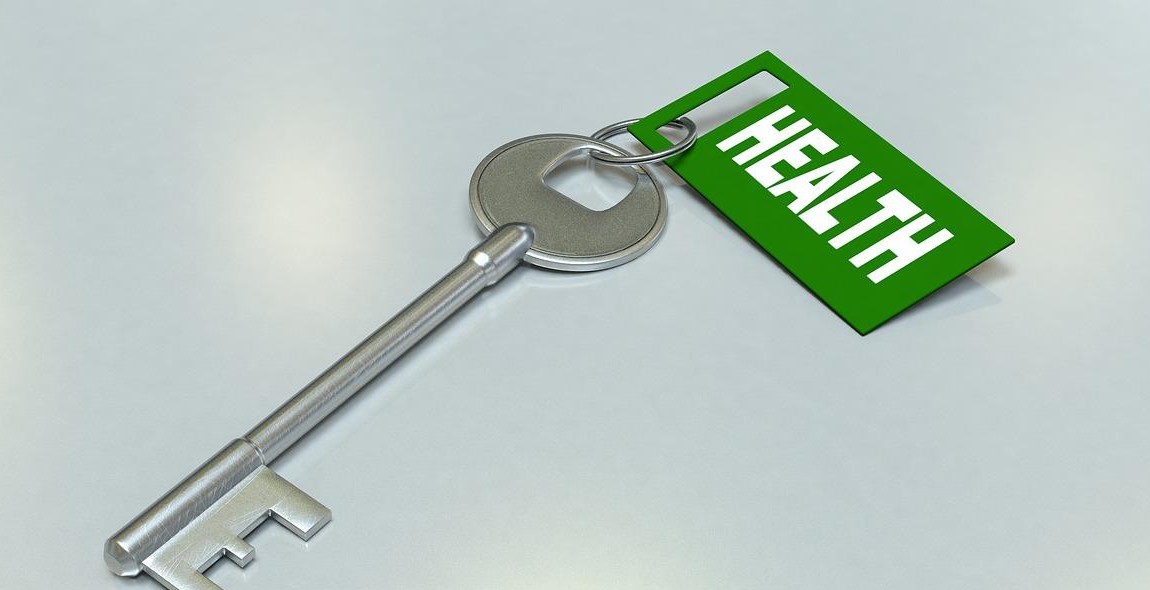How to Start a Fitness Routine: Tips for Establishing an Exercise Plan
Are you tired of feeling sluggish and out of shape? Do you want to improve your health and fitness levels but don’t know where to start? Establishing a fitness routine is the first step towards achieving your fitness goals.
Why is Establishing a Fitness Routine Important?
Establishing a regular exercise routine has numerous benefits for both your physical and mental health. Regular exercise can improve your cardiovascular health, increase muscle strength and endurance, and help you maintain a healthy weight. It can also boost your mood, reduce stress and anxiety, and improve your overall quality of life.
However, starting a fitness routine can be overwhelming, especially if you’re new to exercise or haven’t been active in a while. With so many workout options and conflicting advice, it can be challenging to know where to begin.
That’s why we’ve put together this guide to help you establish an exercise plan that works for you. Whether you’re looking to lose weight, build muscle, or simply improve your overall health, we’ve got you covered.
- Step 1: Define your fitness goals
- Step 2: Choose an exercise routine that suits your needs
- Step 3: Create a workout schedule and stick to it
- Step 4: Track your progress and make adjustments as needed
By following these steps, you’ll be well on your way to establishing a fitness routine that will help you achieve your health and fitness goals.

Step 1: Set Your Goals
Before starting any fitness routine, it is important to set clear and achievable goals. Knowing what you want to achieve will help you stay motivated and focused throughout your journey.
What are Your Fitness Goals?
Take some time to think about what you want to accomplish through exercise. Do you want to lose weight, gain muscle, or simply improve your overall health? Once you have a clear idea of your goals, you can start planning your workout routine accordingly.
Make Your Goals SMART
When setting your goals, it’s important to make them SMART:
- Specific: Be clear and specific about what you want to achieve. For example, instead of saying “I want to lose weight,” say “I want to lose 10 pounds in the next three months.”
- Measurable: Make sure your goals are measurable so you can track your progress. Use tools like a scale or a measuring tape to keep track of your weight loss or muscle gain.
- Achievable: Set goals that are challenging but achievable. Don’t set yourself up for failure by setting unrealistic goals.
- Relevant: Make sure your goals are relevant to your overall fitness plan. For example, if your goal is to run a 5K, focus on cardio exercises that will help you build endurance.
- Time-bound: Give yourself a deadline to achieve your goals. This will help you stay focused and motivated.
By setting SMART goals, you can create a realistic and achievable fitness plan that will help you reach your desired outcomes.
| Example of a SMART Goal: |
|---|
| Specific: I want to lose 10 pounds in the next three months. |
| Measurable: I will weigh myself every week to track my progress. |
| Achievable: I will aim to lose 1-2 pounds per week through a combination of diet and exercise. |
| Relevant: My goal is relevant to my overall fitness plan of improving my health and self-confidence. |
| Time-bound: I will achieve my goal by the end of three months. |
Now that you have set your goals, you can move on to the next step of establishing your exercise plan.

Step 2: Choose Your Exercise
Now that you have established your fitness goals, it’s time to choose the type of exercise that will help you achieve them. There are several types of exercises to choose from, including:
Cardiovascular Exercise
Cardiovascular exercise, also known as aerobic exercise, is any exercise that increases your heart rate and breathing rate. Examples of cardiovascular exercise include running, cycling, swimming, and dancing. Cardiovascular exercise is great for improving your heart health, burning calories, and reducing stress.
Strength Training
Strength training, also known as resistance training, is any exercise that uses weights or resistance to build muscle strength and endurance. Examples of strength training exercises include lifting weights, using resistance bands, and doing bodyweight exercises like push-ups and squats. Strength training is essential for building lean muscle mass, improving bone density, and increasing metabolism.
Flexibility and Balance
Flexibility and balance exercises are essential for maintaining mobility and preventing injury. Examples of flexibility and balance exercises include yoga, Pilates, and tai chi. These exercises can help improve your range of motion, reduce muscle soreness, and promote relaxation.
Choosing the Right Exercise for You
When choosing your exercises, it’s important to consider your fitness level, personal preferences, and any physical limitations you may have. It’s also important to vary your exercises to prevent boredom and ensure that you are targeting all areas of your body.
| Exercise Type | Benefits |
|---|---|
| Cardiovascular Exercise | Improves heart health, burns calories, reduces stress |
| Strength Training | Builds lean muscle mass, improves bone density, increases metabolism |
| Flexibility and Balance | Improves range of motion, reduces muscle soreness, promotes relaxation |
Remember to start slowly and gradually increase the intensity and duration of your exercises as your fitness level improves. Consult with a personal trainer or healthcare professional if you have any concerns or questions about starting an exercise program.

Step 3: Make a Plan
Now that you’ve set your fitness goals, it’s time to make a plan. Here are some important factors to consider:
How Many Days a Week Should You Exercise?
The American Heart Association recommends at least 150 minutes of moderate-intensity aerobic exercise or 75 minutes of vigorous aerobic exercise per week. This breaks down to about 30 minutes a day, five times a week. However, if you’re just starting out, it’s important to start slow and gradually increase the frequency and duration of your workouts. Aim for three to four days a week and gradually work your way up to five or six days a week.
What Time of Day Should You Exercise?
The best time to exercise is the time that works best for you. Some people prefer to exercise in the morning, while others prefer to exercise in the evening. It’s important to choose a time that fits your schedule and allows you to be consistent with your workouts. If you’re not a morning person, don’t force yourself to wake up early for a workout. Find a time that works best for you and stick with it.
How Long Should Your Workouts Be?
The duration of your workouts depends on your fitness level and goals. If you’re just starting out, aim for 30 minutes of moderate-intensity exercise per session. As you become more fit, gradually increase the duration of your workouts to 60 minutes or more. However, it’s important to listen to your body and not push yourself too hard. If you’re feeling tired or sore, take a break or decrease the duration of your workout.
| Days per Week | Duration per Session | Intensity |
|---|---|---|
| 3-4 | 30-45 minutes | Moderate |
| 5-6 | 45-60 minutes | Moderate to Vigorous |
Remember, the key to success is consistency. Choose a workout schedule that fits your lifestyle and stick with it. Over time, you’ll see the results you’re looking for.
Step 4: Build a Support System
Starting a fitness routine can be difficult, but having a support system can make it easier to stick to your exercise plan. Here are some ways to build a support system:
Find a Workout Buddy
Working out with a friend can make exercising more enjoyable and keep you accountable. You can motivate each other to push through tough workouts and celebrate your progress together.
Join a Fitness Community
Joining a fitness community, such as a gym or fitness class, can provide you with access to like-minded individuals who share similar fitness goals. You can find support and encouragement from others who are also on a fitness journey.
Hire a Personal Trainer
A personal trainer can provide you with individualized support and guidance to help you achieve your fitness goals. They can create a personalized workout plan for you and provide you with accountability and motivation to keep going.
| Pros | Cons |
|---|---|
|
|
Building a support system can help you stay on track with your fitness routine and reach your goals. Whether it’s finding a workout buddy or hiring a personal trainer, having someone to support and encourage you can make all the difference.
![]()
Step 5: Track Your Progress
Tracking your progress is an essential part of starting a fitness routine. It helps you stay motivated, monitor your achievements, and identify areas that need improvement. Here’s why it’s important to track your progress:
Why is Tracking Your Progress Important?
- Keeps you motivated: Seeing progress, no matter how small, can keep you motivated to continue with your fitness routine.
- Helps you monitor your achievements: Tracking your progress allows you to see how far you’ve come and what you’ve accomplished.
- Identifies areas that need improvement: By tracking your progress, you can identify areas that need improvement and adjust your fitness routine accordingly.
How to Track Your Progress
There are many ways to track your progress, including:
- Keeping a workout journal: Write down your workouts, including the exercises, sets, and reps you performed, as well as how you felt during and after the workout.
- Using a fitness app: There are many fitness apps available that can help you track your progress, including MyFitnessPal, Fitbit, and Strava.
- Taking progress photos: Take photos of yourself at regular intervals to see how your body is changing over time.
- Measuring your body composition: Use a scale or body fat calipers to measure your body composition and track changes.
Remember, tracking your progress is an important part of starting a fitness routine. It can help you stay motivated, monitor your achievements, and identify areas that need improvement.
Conclusion
Starting a fitness routine can be intimidating, but with the right approach, it can be a fulfilling and rewarding experience. The key is to set realistic goals, create an exercise plan that works for you, and stay consistent over time. Remember, fitness is a journey, not a destination.
Tips for Success
- Start with small, achievable goals and gradually increase the intensity and duration of your workouts.
- Find an exercise routine that you enjoy and mix it up to prevent boredom.
- Track your progress and celebrate your achievements along the way.
- Stay motivated by finding a workout buddy or joining a fitness community.
- Make sure to incorporate rest and recovery into your routine to prevent injury and burnout.
Final Thoughts
Starting a fitness routine can be challenging, but the benefits are well worth the effort. By following these tips and staying committed to your goals, you can establish a healthy and sustainable exercise plan that will improve your physical and mental well-being. Remember, fitness is a lifelong journey, so enjoy the process and celebrate every step of the way.
| Author: | John Doe |
| Date: | May 1, 2021 |
| Category: | Fitness |
